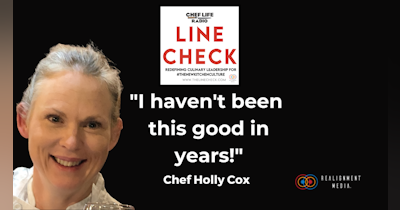If you’ve heard names such as Gloucestershire Old Spots, Barred Plymouth Rock, or Randall Blue Lineback, you might think that they are townships in Lancaster County. In fact, these are just a few examples of heritage breed pork, chicken, and cattle respectfully.
Don’t be upset if you didn’t correctly identify them at first glance. There’s a good chance that even some of your vendors haven’t heard about them yet, but they soon will. There is a quiet revolution happening behind the scenes in the meat industry.
But what exactly does it mean when people say “heritage breeds” and how can you know that what you are buying is the real deal?
Furthermore, now that you’ve bought some, what do you do with it?
The Livestock Conservancy, which works to establish the United States Department of Agriculture’s guidelines for such animals, defines heritage breeds as those that “are traditional livestock breeds that were raised by our forefathers. These are the breeds of a bygone era before industrial agriculture became a mainstream practice. These breeds were carefully selected and bred over time to develop traits that made them well-adapted to the local environment, and they thrived under farming practices and cultural conditions that are very different from those found in modern agriculture.”
Kari Underly, master butcher and principal at Range Partners in Chicago, told me recently, “When you hear the word ‘heritage,’ think local.” She’s a third-generation butcher and educator who sadly joked to me that, “My family lived, and lost the American Dream.” Her story perfectly illustrates just how the meat industry has changed over the last one hundred years.

Her grandfather probably knew all the names of the local heritage breeds, and likely dealt with the ranchers who tended these animals firsthand. That’s just the way business was done back in the day, before middlemen and the mob got into the racket at the West Randolph-Fulton Market District in Chicago during the ‘20s. The local butcher shop was the place to go for fresh-cut meats and friendly advice on how to use the them, with a side helping of neighborhood gossip. The local grocery stores hadn’t yet capitalized on supply chain economics and scaled costing quite yet. World War II would change all of that.
Women, left behind during the war to man the factories and their homes, were seeking new solutions to their harried lifestyles. Industry was quick to answer.
“Consumer preferences drive the market,” Kari told me. Factory farming and animal husbandry carried the day. Speed of production and ease-of-use became the standards by which most breeds were, and to a large extent still are today, produced.
The Livestock Conservancy describes how the industry moved to address the problem: “Many breeds used in large scale agriculture have been specifically selected for intensive production including rapid growth, feed efficiency, continuous milk or egg production, or other targeted production characteristics.”
Kari saw the industry that she grew up in, and fell in love with, collapse under the weight of market consolidation and thinner margins made up in volume. Her father’s butcher shop closed its doors in the 1960s, unable to compete. Most ranchers who had previously raised local breeds switched to more mainstream variations to literally “keep the farm” or lost them entirely when they couldn’t afford to retool their operations.

That’s all changed now. Some older shops have weathered the financial and cultural storm of the last fifty years, such as Gepperth’s Meat Market in Lincoln Park Chicago, Smitty’s Old Fashioned Butcher Shop in Oakland Park, Fla., and Florence Meat Market in the West Village of New York City. Lately, more artisanal butcher shops are opening up in response to consumers looking to the past for more authentic, flavorful, and eco-friendly proteins like Dickson’s Farmstand Meats in the Chelsea Market area of New York City, where all meats come from within 400 miles of the shop.
Lindy and Grundy in Los Angeles in another example of these “new school” butcher shops and is L.A.’s first sustainable, local, and organic butcher shop.
People who follow paleo or keto lifestyles have begun to push the consumer pendulum back towards more fat in their meat to promote brain health and more efficient thermodynamic production of personal energy.
While most of the heritage breed animals featured in these types of stores haven’t reached mainstream restaurants quite yet, the interest these meats and poultry are engendering could speed up availability in the commercial markets, as well. The only thing holding that back so far is volume.
“Most farmers and ranchers are keeping production small to ensure quality,” Kari said. “It’s encouraging that small family farms are starting to flourish again.”
“Isn’t this just another fad?” I asked Kari, “Why should chefs support heritage breeds and their ranchers?”
“It’s good for the local economy; it creates jobs. Not just on the farms, but feed stores, trucking, and butchers,” Kari replied, “Secondly, it’s great for the environment. These animals were specially bred for their conditions, and a lot of these farms are following bio-dynamic processes, which in turn helps heal the land, which strengthens the entire grassland ecosystem. These animals are typically raised with fewer antibiotics and less growth hormones, which means healthier meat.”
Questions remain. How does one actually know what they’re buying when there are no standardized testing or labeling laws for heritage breeds? There has already been some confusion about what “natural” or “100% natural” means on food labels.

Currently, the USDA, which is tasked with regulating meat and poultry, says that a product is “natural” if it contains “no artificial ingredient or added color and is only minimally processed. Minimal processing means that the product was processed in a manner that does not fundamentally alter the product.” But what does that mean?
Terms like “heirloom,” “antique,” “old-fashioned,” and “old-timey” imply “heritage” and are understood to be synonymous with the definition, but who really knows?
Since there are no codified USDA rules for heritage breed consistency — yet — Kari suggests looking for the following characteristics when choosing these types of proteins:
- Beef will typically be grass-fed, or grass-finished. Since little to no corn feed was used in the raising of the animal, there will be a difference in taste. Of all proteins, “grass-fed beef will have the most pushback from consumers if they don’t understand what they’re eating.”
- Be very clear in menu languaging.
- Offer samples to wary guests so that they can experience the taste before buying.
- Grass-fed beef will be leaner and have less marbling; because of that, it’ll have a different mouth feel than traditionally raised cattle.
- Grass-fed beef will often be smaller because they weren’t fed a traditional grain diet, so loins and primal cuts will be smaller.
- Cut grass-fed steaks thicker to make up for the smaller loin “eye.”
- Pork will have substantially more intramuscular fat with some breeds, such as the Red Wattle having significantly more belly fat.
- Poultry sizing will be different than most commercially produced varieties.
- Breasts will be smaller.
- Heritage breed birds will be leaner, with less fat.
Kari pointed out that because of these differences, she has found some best practices when cooking these proteins:
- Beef: Sear on high heat, finish in the oven, and slice thinly.
- Pork: Be careful of the extra fat. “More than once I’ve started a grill on fire because of that,” she laughed.
- Poultry: Because the birds are leaner than their commercial counterparts, go low and slow. Add ghee or butter to the bird before roasting and use a dutch oven or similar stewing methods.
Still unsure of how to work with these kinds of meats? Talk to your local butcher or boutique meat vendor. When asked, Kari told me her hopes for the industry and the future of heritage breed proteins. She replied cheerfully, “I’d like to see an independent butcher shop in every neighborhood.”
If the trend continues, and consumers do indeed drive the market, her dream may yet come true.
For more information about Heritage Breed Proteins and New School Butcher Shops check out:
Previously Published On
The post Heritage Breeds – How & Why to Use Them appeared first on foodwerks inc.





